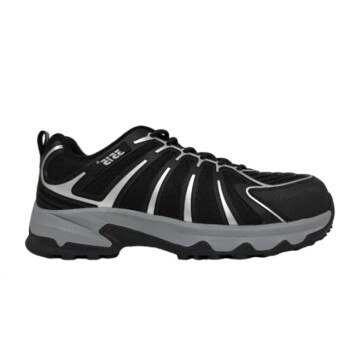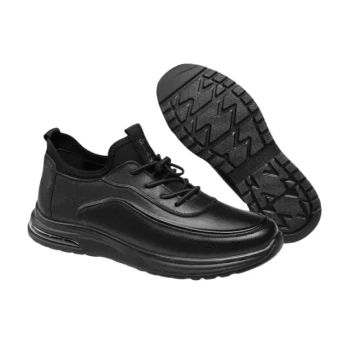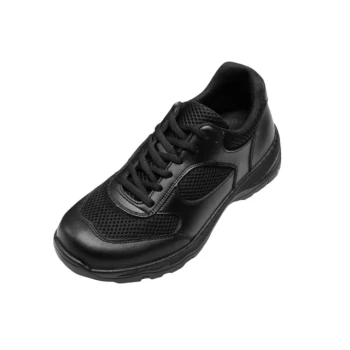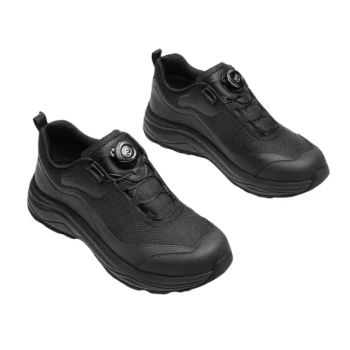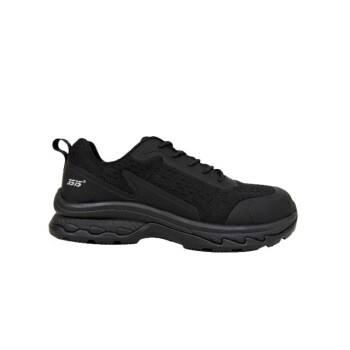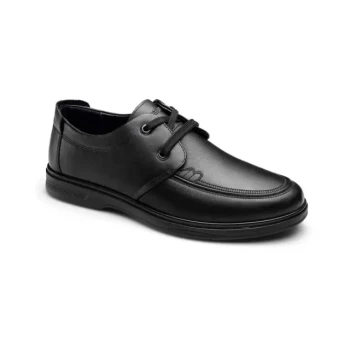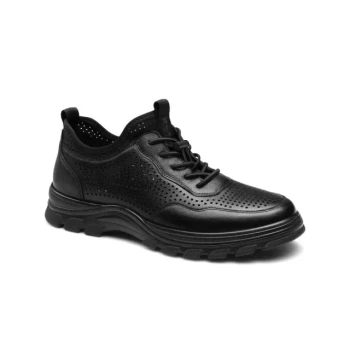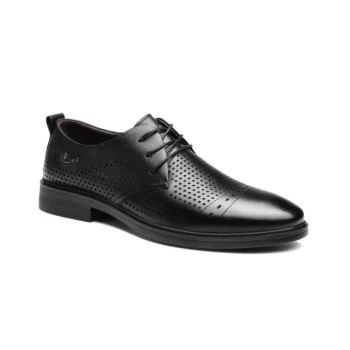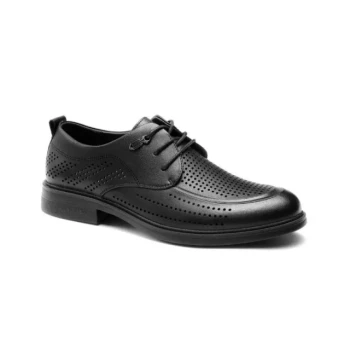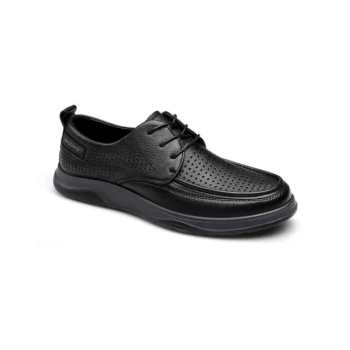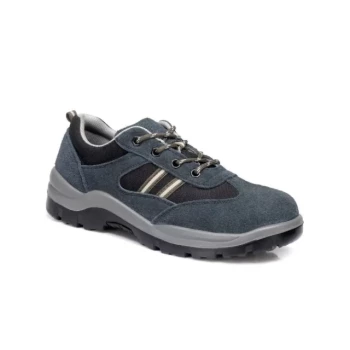Okay, so I'm putting on my Technical Advisor hat. I need to write a solid article on why leather's a smart choice for safety shoes. First, I'm thinking about the user: they're probably looking at footwear options and need the real deal on leather. It's not just a material; it's a balance of properties. They want to know the why, the practical benefits on the job. Durability, comfort, breathability – those are the keywords. But I also need to be upfront about the downsides.
This is how I'm structuring it. I'll hit them with the answer right away: leather's a winning combo of strength, breathability, and comfort. Then, the key takeaway will be that it offers something synthetics often struggle to match. Now, the meat of the article will get into the "why". I'll break it down into the core properties of leather, specifically its unmatched durability, resistance to liquids (that's crucial on-site), and superior breathability. I’ll talk about how it manages moisture, which is key for long shifts. I'll also dive into the natural comfort and temperature regulation that leather provides. I'll even mention different leather finishes, like pigmented leather, and how they enhance specific traits.
Being objective is crucial. So, I'll tackle the trade-offs head-on. Leather needs care; that's a fact. I'll compare it to modern synthetics like EVA, which are lightweight and waterproof. It's a choice: do you prioritize waterproofing or breathability? It's all about context. The conclusion will give actionable advice. I'll suggest leather for demanding environments where durability and comfort are key, or for situations with fluctuating temperatures. For low-maintenance or really wet conditions, synthetics, or even pigmented leather, might be a better fit.
Finally, I'm going to leverage my expert knowledge and synthesize the references, avoiding direct copying and connecting the ideas logically. I’m thinking about how the wearer experiences this footwear. The article's tone will be authoritative and clear. Short paragraphs and headings are essential. My goal is to deliver a high-quality, trustworthy article that answers the user's questions and addresses their deeper needs. To be direct, the primary advantages of using leather in safety shoes are its unique combination of durability, natural breathability, and form-fitting comfort. Unlike many synthetic materials that excel in one area but compromise in another, leather provides a balanced, high-performance solution for demanding work environments.
The core reason professionals continue to choose leather is its ability to protect the foot from external hazards while simultaneously managing the internal environment through natural breathability and moisture absorption, a combination critical for all-day safety and comfort.
The Core Properties of Leather in Safety Footwear
To understand why leather remains a top choice, we must look at its inherent material properties. These characteristics work together to create footwear that is both protective and comfortable for long hours of wear.
Unmatched Durability and Resistance
Leather is fundamentally a strong and rugged material. Its dense fibrous structure makes it highly resistant to abrasion, tearing, and punctures, providing a reliable first line of defense on a job site.
This natural toughness means it can withstand the daily abuse of construction, manufacturing, and other demanding fields far better than many textiles. It also offers a good degree of resistance to many common liquids.
Superior Breathability and Moisture Management
This is leather's most significant advantage over fully synthetic, non-porous materials. Leather is a naturally porous material that allows water vapor to pass through it.
This breathability is critical for preventing heat and sweat buildup inside the shoe during a long shift. Furthermore, leather can absorb a significant amount of moisture—up to three times its own weight—pulling it away from the skin and keeping the foot drier and more comfortable.
Natural Comfort and Insulation
Over time, leather has the unique ability to mold to the specific shape of the wearer's foot, creating a customized and comfortable fit. This reduces friction and the likelihood of blisters.
Leather also serves as a natural temperature regulator. It provides a degree of insulation against both heat and cold, helping to maintain a more stable and comfortable temperature inside the shoe across different working conditions.
Enhanced Performance with Modern Finishes
Not all leather is the same. Treatments can enhance its natural properties for specific applications.
For example, pigmented leather is treated with a protective topcoat. This finish significantly increases its resistance to water damage, fading, and staining, making it more durable and easier to maintain while retaining its core benefits.
Understanding the Trade-offs
While leather offers exceptional performance, it is not without its considerations. An objective assessment requires comparing it to modern alternatives and acknowledging its specific needs.
The Critical Need for Maintenance
Leather is a natural material that can dry out, crack, or become damaged if neglected. To preserve its flexibility, strength, and resistance, it requires regular care, including cleaning and conditioning.
Failure to maintain leather footwear will shorten its lifespan and degrade its protective qualities, a factor that is less of a concern with many sealed synthetic materials.
Comparison with Modern Synthetics
Modern safety shoes often utilize advanced synthetics like EVA (ethylene-vinyl acetate) or waterproof membranes like GORE-TEX. These materials offer distinct advantages, such as being extremely lightweight or completely waterproof from the outset.
However, the trade-off is often breathability. A fully waterproof synthetic boot will not allow sweat to escape as effectively as leather, which can lead to discomfort and moisture buildup during strenuous activity. The choice is a balance between absolute water exclusion and internal moisture management.
Making the Right Choice for Your Work Environment
Selecting the right material depends entirely on the primary demands of your job. Analyze your daily tasks to determine which material property is most critical for your safety and comfort.
- If your primary focus is maximum durability and all-day comfort: Leather is the superior choice, as its breathability and ability to conform to your foot are unmatched for long shifts.
- If your primary focus is working in constantly wet conditions with minimal maintenance: A high-quality synthetic boot with a waterproof membrane may be a more practical option.
- If you need a balance of water resistance and breathability: Consider a pigmented or treated leather boot that offers enhanced protection from moisture without completely sacrificing air exchange.
Ultimately, choosing the right safety footwear is a critical investment in your daily well-being and on-the-job performance.
Summary Table:
| Advantage | Key Benefit | Ideal For |
|---|---|---|
| Durability | Resists abrasion, tearing, and punctures | Construction, manufacturing, heavy industry |
| Breathability | Manages moisture & regulates temperature | Long shifts, fluctuating temperatures |
| Comfort | Molds to the foot for a custom fit | All-day wear, reducing blisters and fatigue |
| Performance | Enhanced with finishes like pigmented leather | Wet conditions requiring water resistance |
Ready to experience the superior protection and comfort of leather safety footwear?
As a large-scale manufacturer, 3515 produces a comprehensive range of leather safety shoes and boots for distributors, brand owners, and bulk clients. Our production capabilities encompass all types of safety footwear, ensuring durability, compliance, and worker comfort.
Contact us today to discuss your specific needs and discover how 3515 can be your trusted partner in safety footwear.
Related Products
- Premium KPU Athletic Safety Shoes for Wholesale
- Wholesale Comfort Leather Business Shoes with Dial Lacing System
- Custom Manufactured Air Cushion Leather Business Shoes for Wholesale
- Wholesale Durable & Breathable Training Shoes for Custom Brands
- Factory Direct Wholesale Leather Comfort Shoes with Dial Closure
People Also Ask
- What are the EN ISO 20345 norms for safety shoes? A Guide to Choosing the Right Protection
- What materials are used in the construction of these boots? A Guide to Velour Leather, Textile & PU Soles
- Why is expert help recommended when selecting safety shoes? Ensure Perfect Fit & Hazard Protection
- Why is slip resistance important in safety footwear? Prevent Costly Workplace Slips and Falls
- What are the conditions faced by employees in meatpacking and poultry slaughter plants? Navigating Pervasive Slip Hazards
